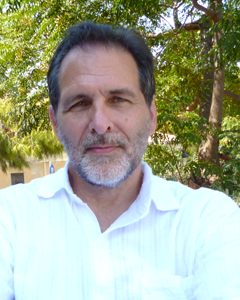

For a long time, memories were thought of as the biochemical equivalent of 3 x 5 cards kept in a file cabinet. And the words on the cards were written in ink, scientists thought, because, once created and stored in the brain, a memory didn’t change. It might be vivid, but it was static, as fixed as a photograph of a remembered moment.
But in recent years, that theory has been flipped on its head. Now, leaders in memory research don’t think that’s the way the mind works at all. Instead, they’ve come to believe that memories actually are fluid things, subject to alteration every time they’re retrieved. When a long-term memory is recalled, it becomes temporarily fungible and goes through a rebuilding process known as reconsolidation. Which suggests that memories, even terrible ones, can be changed during that period when they’re once again unstable.
Several studies published last fall reinforced this notion. One, from researchers at Uppsala University in Sweden, found that a fear memory could be neutralized if the reconsolidation process is disrupted before the memory can solidify. Another, carried out by scientists at the University of St. Andrews in Scotland, concluded that even if a memory isn’t truly erased, it can be made to feel less personal or painful.
Changing the story
The latest evidence that memories can be manipulated came in a study published last month in the Proceedings of the National Academy of Science. Without using drugs, electroshock or any other invasive procedure, two researchers at Iowa State University, Jason Chan and Jessica LaPaglia were able to tamper with the memories of their study subjects.
Here’s how they did it. They asked those participating in the study to watch an episode of the old TV drama “24.” One of its more evocative scenes showed a terrorist on an airplane jabbing a flight attendant with a hypodermic needle to knock her out. A bit later, some of those in the study were given a quiz about what they had watched, the goal of which was to make them retrieve their memories of the show.
As their reconsolidation process began, however, they were asked to listen to an eight-minute audio recap of the program–except that several of the facts were inaccurate. For instance, they were told that the terrorist had used a stun gun, not a hypodermic needle to disable the flight attendant. When they were retested later, only 17 percent of the people in that group correctly identified the needle as the weapon of choice.
Meanwhile, 42 percent of another group got the weapon question right when they took the same test. They, too, had listened to the recap with the bogus information. But they hadn’t taken the first test the other group had; instead they played a computer game.
So why did people in the first group have such serious recall problems when they retook the test?
Chan and LaPaglia believe that by taking a test after watching the show, those subjects were forced to retrieve their memories of it, and it was during the rebuilding process that they heard the audio recap. And, the thinking goes, that’s what caused their temporarily vulnerable memories to muddle the story.
Chan noted that there are several key factors in reshaping memories. First, the disruption needs to happen soon after the memory is called up–for now, scientists seem to have settled on a six-hour window. Wait much longer and the changes don’t take. Also, any alterations need to fit into the context of the original memory. If they don’t make sense in the story that structures the memory, they’re not likely to have much effect in changing it.
This is a pretty dramatic shift from the old file cabinet notion. To appreciate how far thinking on the subject has evolved, consider the perspective of Daniela Schiller, one of the world’s leading memory researchers. “My conclusion,” she says, “is that memory is what you are now. Not in pictures, not in recordings.
“Your memory is who you are now.”
You must remember this
Here are more conclusions scientists have made about memories in the past few months:
Video bonus: Daniela Schiller talks about her memory research and what her father’s refusal to talk about the Holocaust had to do with it.
Video bonus bonus: And a little slice of how Hollywood views memory-erasing: Jim Carrey turns to “science” to literally get Kate Winslett out of his mind in “Eternal Sunshine of the Spotless Mind.”
More from Smithsonian.com
Get the latest stories in your inbox every weekday.